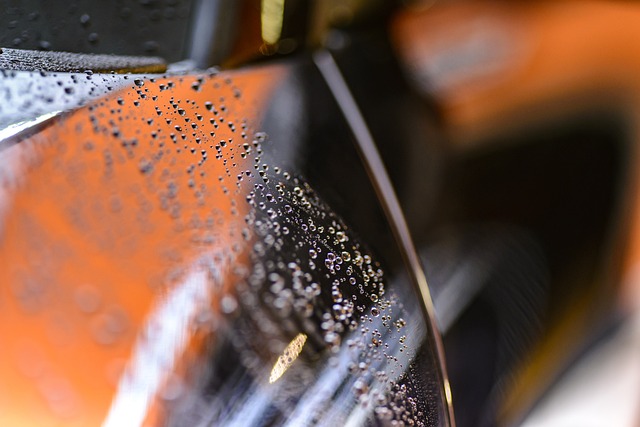Pressure washing and power washing are specialized cleaning services that offer different solutions for maintaining the cleanliness and longevity of various surfaces. Pressure washing, which uses high-pressure water between 1,300 to 4,000 PSI, is ideal for clearing dirt, grime, and mold from driveways, sidewalks, and building exteriors. Power washing enhances this with heated water, effectively tackling more demanding tasks like paint stripping, gum removal, and sanitizing surfaces to eliminate bacteria and viruses. Both services require expert handling to protect delicate materials and ensure the best results. When selecting a service provider, look for one with expertise in both residential and commercial settings, a track record of positive customer feedback, proper licensing and insurance, and a commitment to using eco-friendly detergents. This ensures that your property receives top-notch cleaning that is both effective and environmentally conscious. Pressure washing can rejuvenate the appearance of your property and protect its structural integrity by removing harmful contaminants, while soft washing provides a gentle approach for more sensitive surfaces. Ultimately, engaging a skilled pressure or power washing service not only enhances the aesthetics of your property but also maintains its safety and value by addressing potential slip hazards and extending its lifespan.
Pressure washing and power washing are often used interchangeably, yet they serve distinct purposes in cleaning and maintenance. This article delves into the nuances of these services, guiding you through the process of selecting the ideal provider for your needs and detailing the myriad benefits and techniques involved in pressure washing. Whether revitalizing your home’s exterior or maintaining your commercial property, understanding the intricacies of each service is key to achieving the best results. Join us as we explore the practical aspects of pressure washing and how it can effectively enhance the appearance and longevity of various surfaces.
- Understanding Pressure vs. Power Washing: Defining the Services
- The Comprehensive Guide to Choosing the Right Pressure Washing Provider
- A Step-by-Step Breakdown of Pressure Washing Benefits and Techniques
Understanding Pressure vs. Power Washing: Defining the Services

Pressure washing and power washing are terms often used interchangeably, yet they refer to distinct services with different applications and equipment. At its core, pressure washing involves the use of high-pressure water to clean surfaces. It’s a versatile solution suitable for a variety of tasks, from cleaning driveways and sidewalks to washing the exterior of homes and commercial buildings. The key component here is the pressure, which can range from 1,300 to 4,000 pounds per square inch (PSI), depending on the job’s requirements. This high-pressure water can effectively remove dirt, grime, mold, and other accumulations that over time can degrade the appearance and integrity of surfaces.
In contrast, power washing is a more comprehensive service that combines high-pressure water with heated water to tackle tougher cleaning jobs. Power washers typically operate at higher temperatures than pressure washers, which can loosen even stubborn stains and deposits. This heating element enhances the cleaning power and is particularly effective for tasks like stripping paint, removing chewing gum, or sanitizing areas where high heat can neutralize harmful bacteria and viruses. Both services require skilled professionals to handle the equipment safely and effectively, ensuring that delicate surfaces are not damaged during the cleaning process. Whether it’s a residential pressure washing job or a commercial power washing task, these services play a crucial role in maintaining property cleanliness and longevity.
The Comprehensive Guide to Choosing the Right Pressure Washing Provider

When considering a pressure washing or power washing service to restore the cleanliness and aesthetics of your property, selecting the right provider is paramount. A reputable pressure washing company should possess the necessary expertise, equipment, and solutions to handle various surfaces without causing damage. Look for providers with experience in both residential and commercial settings, as this indicates a versatile skill set suitable for a wide range of tasks, from cleaning driveways and decking to sanitizing commercial facades. Ensure they use eco-friendly, biodegradable detergents that are safe for the environment and your family.
Furthermore, verify their credentials by checking their licenses, insurance, and reviews from past clients. A professional pressure washing service will not only ensure top-notch results but also provide peace of mind, knowing that your property is in capable hands. Inquire about their specific services, as some may specialize in particular areas like window cleaning, gutter cleaning, or graffiti removal. Additionally, consider a provider who offers free estimates; this allows you to assess the scope of the work and the associated costs before making a commitment. By taking these steps, you can find a reliable pressure washing provider that meets your needs and exceeds your expectations for a spotless property.
A Step-by-Step Breakdown of Pressure Washing Benefits and Techniques

Pressure washing is an effective method for revitalizing the exterior surfaces of homes and commercial properties, offering a range of benefits that contribute to both aesthetic appeal and practical maintenance. The process begins with a thorough assessment of the area to be washed, which includes identifying the type of material (like brick, wood, or concrete) and understanding its specific needs. This step is crucial for determining the optimal pressure setting to ensure surfaces are cleaned without incurring damage. Using specialized equipment, a pressure washing technician applies high-pressure water streams to remove dirt, grime, mold, and mildew, effectively restoring the appearance of structures and improving overall curb appeal. This not only enhances visual appeal but also plays a significant role in extending the lifespan of surfaces by preventing long-term damage from accumulated dirt and contaminants.
In terms of technique, pressure washing providers employ various methods tailored to different materials and stains. For example, a soft wash system is used for more delicate surfaces to apply a low-pressure water stream combined with a cleaning solution that safely eliminates tough stains. On the other hand, for harder, more resilient surfaces, a high-pressure technique may be employed to remove stubborn dirt and debris. The process involves selecting the correct nozzle to regulate water pressure, choosing the right chemical solutions for different types of staining, and applying them effectively. It’s also essential to use eco-friendly detergents that are safe for the environment while still being powerful enough to clean effectively. Pressure washing providers with expertise in both residential and commercial settings can navigate these techniques to ensure surfaces are cleaned thoroughly, safely, and efficiently, providing lasting results that maintain property values and enhance safety by eliminating slip hazards caused by algae and moss growth.
When considering the restoration and maintenance of various surfaces, pressure washing stands out as an invaluable service for both residential and commercial properties. This article has illuminated the distinctions between pressure and power washing, guiding readers through the process of selecting a reliable provider and detailing the myriad benefits and techniques involved in pressure washing. Homeowners and businesses alike can reap the rewards of this effective cleaning method, enhancing the appearance and longevity of their assets. By understanding the intricacies of pressure washing, one can make informed decisions to keep their premises pristine and operational at peak efficiency.
